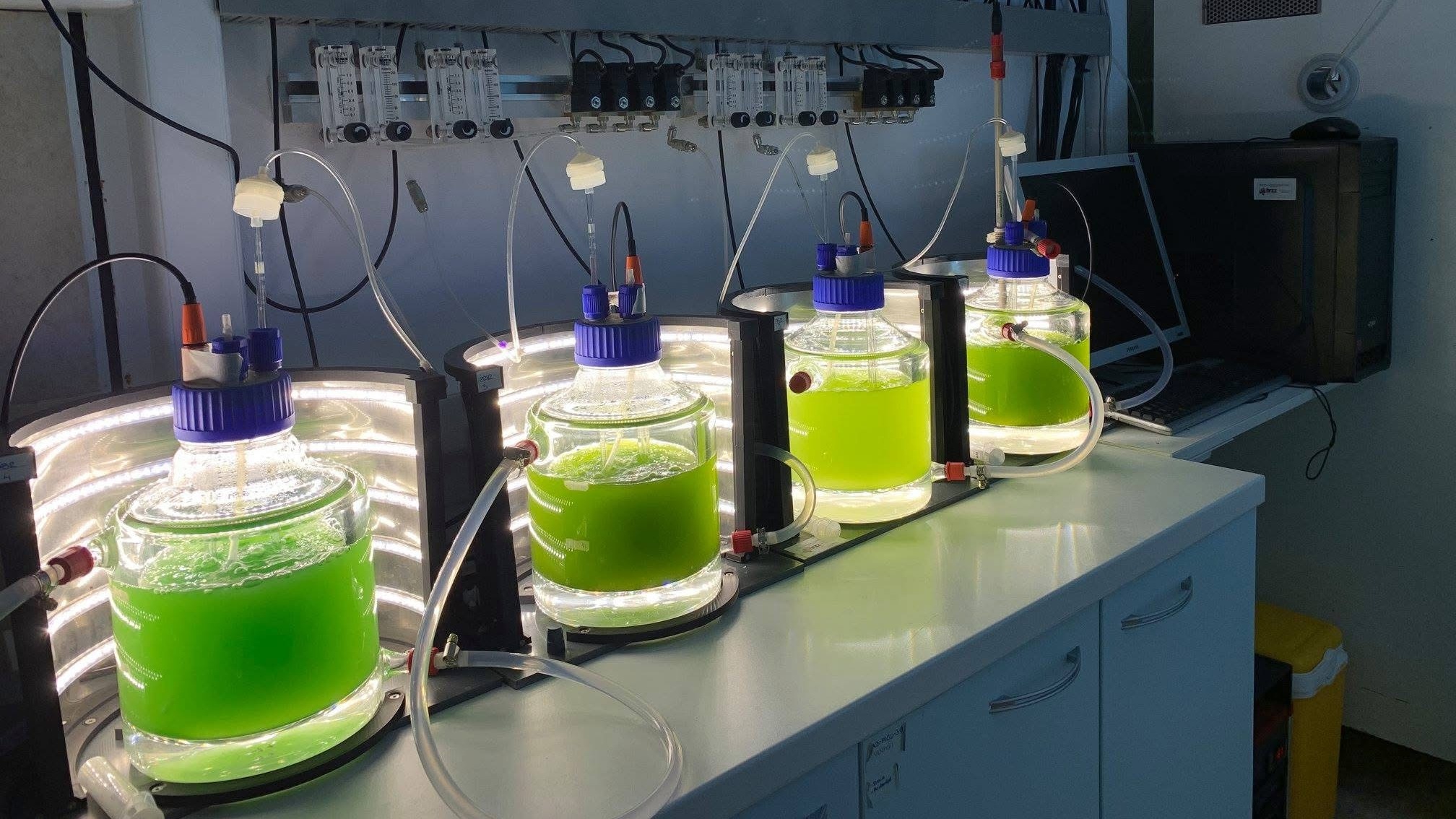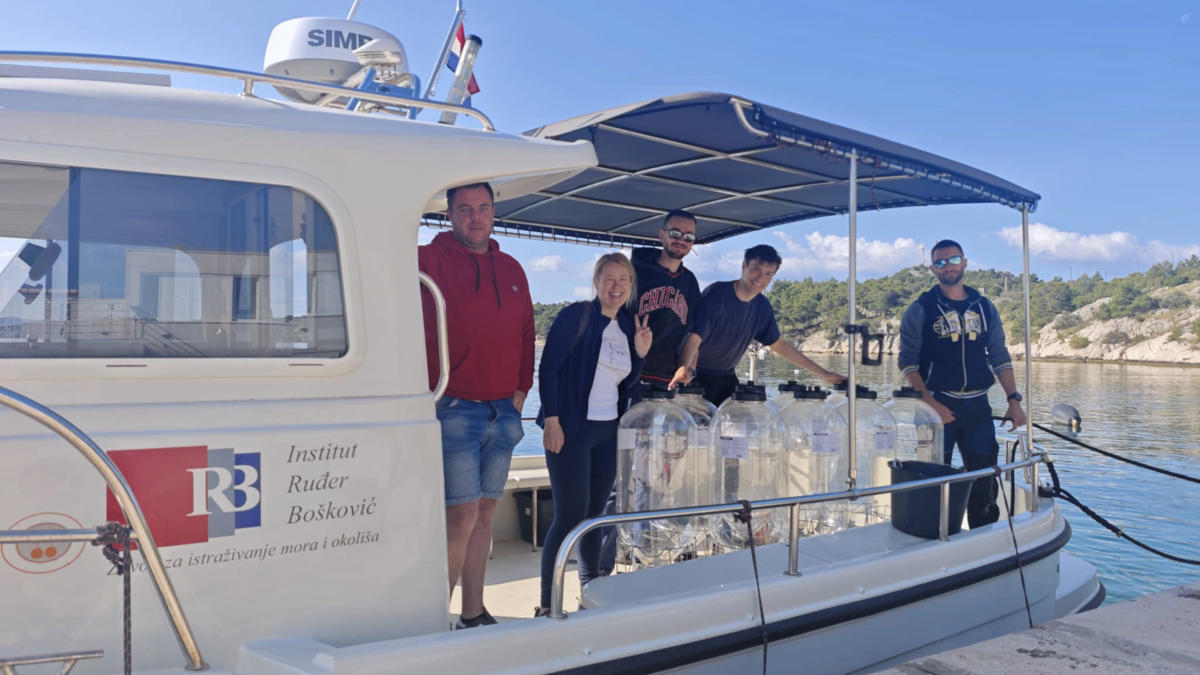Their work may not make front-page news, but what happens in the labs of the Institute’s Division for Marine and Environmental Research in Zagreb (ZIMO), the coastal station Martinska near Šibenik, and the Center for Marine Research in Rovinj (CIM), is crucial not just for the health of the sea and the environment, but for our own well-being.
Science That Listens to the Sea
At ZIMO, the RBI’s largest multidisciplinary division, more than 100 scientists regularly analyze water, air, sediment, and microbial data. One of their flagship initiatives is the GLOMETS project, led by Dr. Ivica Vilibić, which investigates a little-known but potentially devastating phenomenon: meteotsunamis, large waves caused not by earthquakes, but by atmospheric disturbances such as rapid changes in air pressure, high winds, or volcanic eruptions thousands of kilometers away.
When the Hunga Tonga–Hunga Ha’apai volcano erupted in 2022, it sent a shockwave that literally made the oceans "ring" across the globe. RBI scientists studied that data and are now developing models to help predict future tsunamis triggered not only by volcanic events, but also by the increasingly intense storms fueled by climate change.
“These waves come without the ground shaking, they’re born in the air,” explains Dr. Vilibić. “Without proper monitoring and early warning systems, they can pose serious risks.”
Can the Ocean Help Save the Climate?
Roughly 100 kilometers to the south, in the peaceful cove of Martinska near Šibenik, another globally significant experiment is underway. As part of the international OAEPIIP project, researchers are exploring the ocean’s potential as an ally in the fight against climate change. In 55-liter tanks filled with Adriatic seawater, Dr. Jelena Godrijan and her team are studying how increasing the ocean’s alkalinity affects marine communities. Alkalinity enhances the sea’s ability to absorb atmospheric carbon dioxide (CO₂).
“Adding alkaline substances mimics the natural process of rock weathering. It’s one of the emerging strategies in climate intervention,” explains Dr. Godrijan. “Our goal is to understand how this impacts marine life before scaling it up.”
The success of this technique depends on a delicate balance. Plankton, the foundation of the marine food web, must remain stable. Each sample is examined under a microscope, changes are recorded meticulously, and results are compared with data from 18 other global sites. Croatia is thus part of the world’s first network testing ocean-based climate interventions.
dr. sc. Jelena Godrijan and her team
Reviving the Lost Underwater Forests
At the Center for Marine Research in Rovinj, scientists are investigating numerous changes occurring in the Adriatic and looking for ways to counter them. One key indicator of a healthy sea is the presence of brown algae from the order Fucales, large seaweeds that form underwater forests and provide shelter for countless marine species. Unfortunately, due to pollution, coastal development, and rising sea temperatures, these marine forests have nearly vanished.
Through the REFINE project, researchers are mapping the remaining populations, studying their reproductive capabilities, and developing new methods for transplanting and restoring them, even in areas with concrete coastlines.
“Our aim is to bring algae back not only to their natural habitats, but also to human-altered environments,” the scientists explain. “It’s about restoring life to places where it’s been nearly erased.”
Invasive Species – Silent Intruders in the Adriatic
Not all marine life is welcome. Species like the blue crab or tropical algae arrive via ship ballast water or fishing equipment and rapidly outcompete native species. These invasive species are becoming an escalating challenge in the Adriatic.
Through the ALIENA project, the RBI scientists, in collaboration with researchers from neighboring countries, are developing a shared monitoring and early warning system, along with public education campaigns.
“We can’t protect the sea without regional cooperation,” they warn. “Invasive species don’t stop at borders.”
A Smart Boat for a Healthier Sea
In the spirit of innovation and collaboration, the BRIGANTINE project introduces a new kind of marine researcher: an autonomous, crewless vessel. Equipped with sensors, cameras, and AI algorithms, this smart boat can navigate independently, collect real-time data on sea temperature, salinity, and algae presence, and transmit it directly to scientists.
“Imagine a mini oceanographer, tirelessly at work, no fuel, no emissions,” says Dr. Mirta Smodlaka Tanković, project coordinator and head of the Center for Marine Research in Rovinj. “That’s the future of marine monitoring.”
Algae That Clean and Create Energy
Dr. Maria Blažina and her team are studying microalgae that thrive in polluted wastewater, and can clean it in the process. These algae absorb CO₂ while producing valuable biomass.
Through the A3PhyCoTox project, researchers are testing these algae in both laboratory and computer simulations to develop a new, eco-friendly method of purifying industrial water.
“Algae are our silent allies,” says Dr. Blažina. “Invisible to the eye, yet powerful in their ability to clean and transform.”
A Sea Lab for the Future
At a time when our oceans are increasingly under threat, the scientists of the Ruđer Bošković Institute, through their teams in Zagreb, Šibenik, and Rovinj, are building the scientific foundation for understanding, protecting, and restoring the Adriatic.
“On World Oceans Day, perhaps it’s time we look beyond the waves and summer postcards, and focus on what’s happening beneath the surface,” they say. “Let’s give thanks to those who listen to the sea, analyze it, and learn how to protect it, for us, and for generations to come.”



